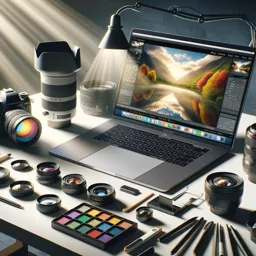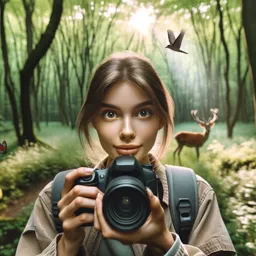Photography, the art of capturing light to create images, has undergone significant transformations since its inception. From early experiments in light-sensitive materials to the digital revolution, the journey of photography is a fascinating story of innovation, creativity, and technological advancement. Here is a comprehensive overview of the history and evolution of photography.
Early Beginnings: The Birth of Photography
Camera Obscura (5th Century BC – 17th Century AD):
- The concept of capturing images dates back to ancient times with the camera obscura, a darkened room or box with a small hole that projects an inverted image of the outside scene onto a surface inside.
- Used by artists to trace scenes, it laid the groundwork for understanding light and optics.
First Photograph (1826):
- Joseph Nicéphore Niépce created the first permanent photograph, known as “View from the Window at Le Gras,” using a process called heliography. He exposed a bitumen-coated plate for several hours to capture the image.
The Daguerreotype Era (1839 – 1860s)
Louis Daguerre and the Daguerreotype (1839):
- Louis Daguerre developed the daguerreotype, the first practical photographic process. It used a polished silver-plated copper sheet, sensitized with iodine vapor and exposed to light in a camera.
- The image was developed using mercury vapor and fixed with a salt solution. It produced a highly detailed, one-of-a-kind image.
Popularity and Impact:
- The daguerreotype gained widespread popularity, leading to the establishment of commercial portrait studios.
- It democratized portraiture, making it accessible to the middle class.
Advances in Photographic Processes (1840s – 1880s)
Calotype and Talbotype (1841):
- William Henry Fox Talbot introduced the calotype process, using paper coated with silver iodide. It produced a negative image, which could be used to make multiple positive prints.
- Talbot’s process laid the foundation for modern photography.
Wet Plate Collodion (1851):
- Frederick Scott Archer invented the wet plate collodion process, which produced glass plate negatives. The process involved coating a glass plate with collodion, sensitizing it in a silver nitrate solution, and exposing it while still wet.
- It offered sharper images and shorter exposure times compared to earlier methods.
Tintypes and Ambrotypes:
- Tintypes used a similar process to wet plate collodion but on a thin iron plate, making them more affordable and durable.
- Ambrotypes were glass plate images that appeared positive when viewed against a dark background.
The Rise of Film Photography (1880s – 20th Century)
Gelatin Emulsion and Dry Plates:
- Richard Leach Maddox introduced the gelatin dry plate process, which allowed plates to be prepared and stored for later use, making photography more convenient and accessible.
Kodak and Roll Film (1888):
- George Eastman revolutionized photography with the introduction of the Kodak camera, which used roll film instead of glass plates.
- The slogan “You press the button, we do the rest” emphasized ease of use. After capturing images, users sent the camera to Kodak for film processing and reloading.
Color Photography (1907):
- The Autochrome Lumière, introduced by the Lumière brothers, was the first commercially successful color photography process. It used dyed starch grains on a glass plate to produce color images.
The Digital Revolution (Late 20th Century – Present)
Digital Cameras (1975):
- Steven Sasson, an engineer at Eastman Kodak, developed the first digital camera, which captured images using a CCD sensor and stored them on a digital tape.
Digital SLRs and Mirrorless Cameras:
- The introduction of digital single-lens reflex (DSLR) cameras in the 1990s and mirrorless cameras in the 2000s transformed photography, offering high image quality, interchangeable lenses, and advanced features.
Smartphone Photography:
- The integration of high-quality cameras into smartphones in the 21st century revolutionized photography, making it accessible to billions of people worldwide.
Post-Processing and Editing:
- Software like Adobe Photoshop and Lightroom allows photographers to edit and enhance images with unprecedented precision and creativity.
Conclusion
The history and evolution of photography is a testament to human ingenuity and creativity. From the early experiments with light and optics to the digital age, photography has continually evolved, shaping how we capture, preserve, and share our experiences. As technology advances, the future of photography promises even more exciting innovations and possibilities.
































